How Much Will Your Flooring Installation Cost?
Cost To Install Flooring: Hardwood, Laminate, Tile, Carpet, Vinyl.
ESTABLISHED. PROVEN. ECONOMICAL.
Once glance downward while standing in your home can either bring forth pride and joy or weigh you down with sadness. If your flooring is starting to look dated or worn out, it might be time to consider a new floor installation either in a single room or throughout many areas in your home.
When you finally decide to entertain the idea of replacing an old floor, there are a variety of factors that ultimately will affect how much you pay, whether you love the floor once it’s down, and how long it lasts.
A big part of any new flooring choice comes down to material selection. Put simply: All materials are not created equal. Hardwood, laminate flooring, tile, and carpet all offer their own advantages and disadvantages.
After you have given each material choice a close look, you’ll be in a proper position to deem one more well-suited than another for your own personal needs, budget and style.
Hardwood flooring is a traditional flooring material that has begun to come back into the mainstream in a big way in recent years. Wood flooring is coming back into style due to the material’s organic nature and elegant look. Within hardwood, there are still a number of different material and finishing choices that bear careful consideration.

There are certainly a number of attractive options as far as hardwood flooring materials are concerned. Some of the most common types of wood species used in flooring installations are as follows:
Oak:
The most affordable type of wood, oak, is also the most common type found in homes in North America. It is highly resistant to scratches and dents so it makes a great choice for floors that will get heavy foot traffic.
Another benefit of oak is how well it absorbs wood stain which makes it easier to refinish than other hardwood species. It also has very visible grains which, as a matter of preference, some rather appreciate while others do not.
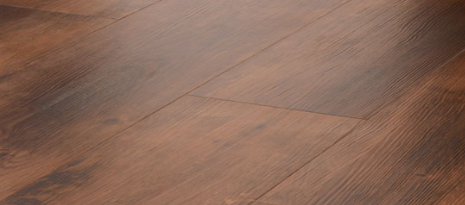
Maple:
Compared to oak, maple is more expensive. How much so depends on the specific grade of maple. Clear grade maple is the most expensive and has the most uniform appearance, showing very few imperfections. This type is often used when your goal is a modern look.
There are a vast number of maple species so it is possible to find maple in a more affordable price range, with varying degrees of softness. Be cautioned that maple won’t typically absorb stain in a very uniform manner, and is known to result in a blotchy final result. It will, however, absorb dark stains better and often will provide the gray wood look that is now becoming rather popular.
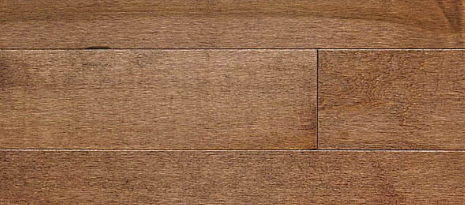
Birch:
Another US native wood with an appearance similar to maple, birch is a tad bit softer and a bit more inexpensive. There are some obscure and uncommon birch types that are harder or softer and may have distinct coloring. Some examples are red birch, yellow birch, and flame birch.
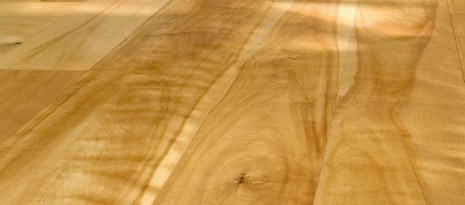
Hickory (aka Pecan):
Another US native wood species, hickory has a look similar to that of oak, but is usually far harder. Also more expensive than oak, hickory makes a great choice for homes with high levels of foot traffic as it hides scratches and dents well.
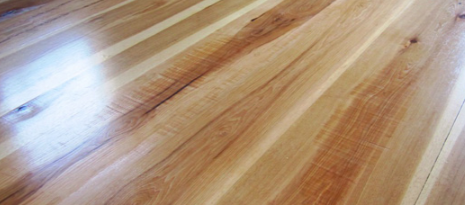
Bamboo:
Technically a grass, bamboo is becoming a very popular flooring material choice for its low prices. Often times cheaper than oak, bamboo only gets more expensive when you start looking at strand-woven varieties which are by far the most durable type.
Be very careful when it comes to exceedingly low-priced bamboo as it usually isn’t very hard and will show scratches, dents, and cracks more quickly and more severely. There also exists a risk in buying low-priced bamboo from China as it can sometimes contain the toxic ingredient formaldehyde.
It also won’t take very well to sanding or staining, so make sure you have the look you want before you lay down Bamboo boards.
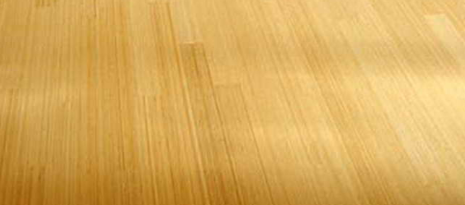
Cherry:
The type and characteristics of a cherry flooring plank depend completely on its origin. Brazilian Cherry is far harder and much more red in appearance whereas American Cherry is far softer than most other wood species and looks more blond, almost mistakable for maple.
They’re both very photo-sensitive which means they will darken and redden more over time than most other wood species. Both species have rather extreme color variations and don’t take specifically well to stain, again resulting in a blotchy stain distribution in most cases.
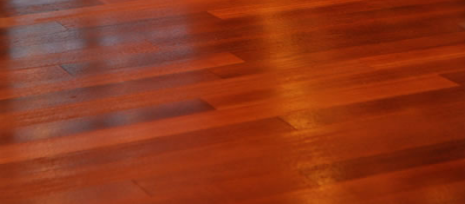
Pine:
Common in older homes, pine is a relatively soft and affordable wood type. Due to its softness, it does have a tendency to display dings and marks. Most folks who choose pine appreciate its softness for the fact that they are after a hardwood that can show imperfections or character as popular home design publications refer to it.
Some pine is actually so soft that furniture and high heels can leave marks, so be careful if this is your hardwood species of choice. Heart pine is a harder type of hardwood that is taken from the heart of the tree, hence its name. Douglas fir is another soft type of pine that usually has a more reddish tone to it.
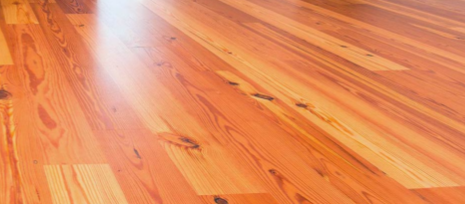
Walnut:
Like cherry, most walnut hardwood flooring will come from either North America or Brazil. The Brazilian variety is one of the hardest types of hardwood in the world, whereas the North American type is an average softness, comparable to oak.
Both have a brownish hue, but the American walnut occasionally will show undertones of gray, purple or red. Interestingly, Brazilian walnut will darken over time whereas the North American variety will actually get lighter.
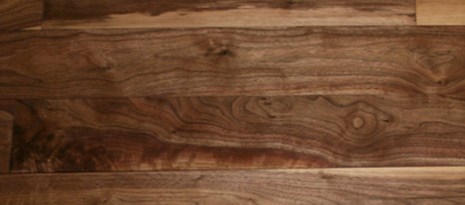
Ash:
An attractive medium toned hardwood, ash has a hardness similar to oak and absorbs stain rather well. It’s a fairly light wood in color and is used in baseball bats, hockey sticks and is often the material out of which tool handles are made.
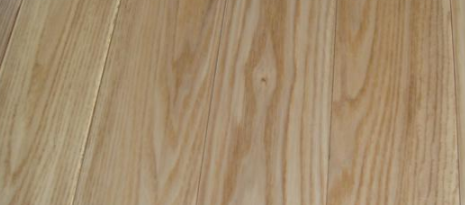
Hardwood flooring is made from natural, organic, once-living material. Nearly all hardwoods will darken with age as the wood is exposed to oxygen and light. If you decide to cover your hardwood floor for long periods of time, expect the covered parts to remain lighter than the parts that remained uncovered.
This could be considered a negative for you depending on your aesthetic preferences and your long term plans. Most hardwood flooring installers will suggest leaving the floor uncovered for about six months to allow the entire floor to adjust a bit before putting down rugs.
Hardwood is certainly not the cheapest material, but from a labor perspective, it isn’t usually the most expensive to install. While unique, highly detailed and elegant, you may object to the extreme degree of color and pattern variation from one board to the next. If you feel this way about hardwood floors, other material choices will offer you greater uniformity with comparable or lower installation and material costs.
Just as with any other home improvement or building project, there are two main components: the materials and the labor. When considering the cost to install hardwood flooring, you can expect to spend anywhere between $7 and $12 per square foot for quality hardwood flooring material and another $2 per square foot for installation.
Some of the more rare and expensive hardwoods might cost as much as $30 per square foot in materials alone, but that’s certainly not the typical price commonly paid by most homeowners. Read our full guide for Hardwood floor installation cost here.
If you love the look of hardwood but want to try and save a bit of money, laminate flooring is a great option. In most cases, laminate flooring is made by pressing together a composite mixture of wood with the image of wood grain printed on top of the composite.
It will have a similar feel to it as regular hardwood flooring but will save you a bit. Laminate flooring can go in most rooms due to its cost and flexibility, but is most often found in living rooms, entryways, and hallways.
Veneered top:
This type of laminate flooring uses a composite, manufactured mixture of wood pressed into from and is then coated with a veneer that bears a resemblance to real wood. The veneered top layer is laid on top of a plywood base to keep costs low.
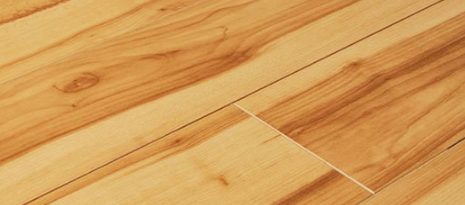
Real wood top:
Also set upon a plywood base, the real wood top variety is designed just as you might imagine. It consists of a thin layer of real wood laid on top of a thicker layer of plywood. This type of laminate flooring provides a more genuine hardwood appearance and to the untrained eye, might even be mistakable for genuine hardwood. This real wood-topped type of laminate is likely to hold up longer than the veneered variety.
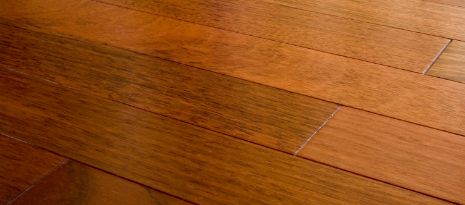
While certainly more affordable than regular harvested hardwood flooring, a laminate floor will lack some of the character popular with traditional hardwood. To the credit of laminate, however, is its supreme durability.
Because it is a manufactured material, it is able to withstand more wear and tear without visually showing it. Laminate flooring also holds up far better in the presence of moisture whereas hardwood can not sustain much moisture exposure without needing to be replaced.
Despite the higher cost of traditional hardwood, it does give you the ability to sand it down to totally refresh it, which most laminates will not. Sanding and restaining a hardwood floor gives it an entirely new lease on life and can really brighten up your space.
Laminate flooring will not endure sanding and your best option in the case of a damaged laminate board is to pull it up and replace it. You could potentially encounter an issue with the new materials not perfectly matching the look of the old.
You can expect the installation cost of laminate flooring to come in at about half of what you’d spend for traditional hardwood or about $1 per square foot in most cases. The comparatively lower installation cost of laminate versus hardwood can be attributed to the increased ease of installation for laminate.
The modern design of laminate flooring has each plank fitting together with specialized grooves that do not require gluing like older laminate materials once had.
In terms of materials, laminate flooring is far more affordable than natural wood as well. The material itself will usually run between $5 and $9 per square foot and depending on the condition and type of sub-flooring you currently have, you might need to spend another $1 per square foot for specialized padding that would sit between the laminate and the subfloor.
When you go to clean a laminate floor, you want to make sure not to use excessive amounts of water and the best advice would be to use specialized laminate flooring cleaner. If water is able to seep down in between the cracks of your laminate flooring planks, you run the risk of the material beginning to swell which can reduce the lifespan of your floor and negatively affect its appearance.
The earliest uses of tile date back to approximately 4000 BC in ancient Egypt but it wasn’t until just recently that tile became a standard flooring material found in most homes. In the mid 20th century, due to breakthroughs in manufacturing technology, tiles began to find a home in many residential homes.
The most common location to spot tile in a home since that time has been bathrooms due to tile’s hygienic properties and ability to resist bacteria. Even until today, tile is most commonly found in bathrooms, kitchens, and hallways. Tile backsplashes and wall treatments are seeing a renaissance in recent years as well, due to the recent abundant selection of tile design options on the market.
The classic method of creating tiles for flooring has to do with the part-art, part-science of ceramic design. Within the category of ceramic tiling, there exists a fair amount of variation.
Ceramic:
This type of tile is manufactured from clay that has been formed into a mold. There are three main ways ceramic tiles are made; dry press, extrusion, and slush mold. The dry press is made as the name would suggest with dry clay materials pressed together under extreme pressure.
The extrusion method includes semi-wet materials being formed into a mold and then being allowed to set. The slush mold method includes a solution of very wet clay material put into a mold and then fired in a hot oven called a kiln in order to harden the tile.
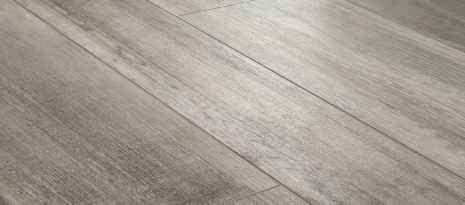
Porcelain:
It is a common misconception about tile materials that porcelain refers to a different material altogether when it is actually just a variation on ceramic. In the porcelain tile manufacturing process, a white dust known as feldspar is added at about a 1-to-1 ratio with the other clay materials and when fired melts the composite material into a glassy appearance.
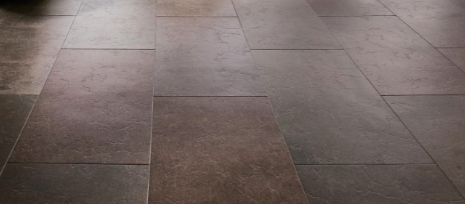
Glazed:
Another variation of classic ceramic tiles is the glazed variety. Some glazing can be clear so that the color and texture of the tile is able to be seen through the glaze coat while other glazing adds color to the top layer of the tile. Glazing is just another option that has more to do with the desired look of the tile more than anything else.
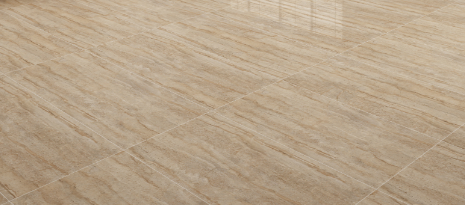
Apart from ceramic tiles, the other material type commonly used in the fabrication of tile flooring is natural stone. There are many types of natural stone that are formed into flooring tile, but these five are the most popular and commonly used.
Marble:
A very porous, yet highly attractive natural stone variety, marble doesn’t work well for kitchen flooring but can be used as an accent or for entryways. It is among the more expensive tile materials as well.
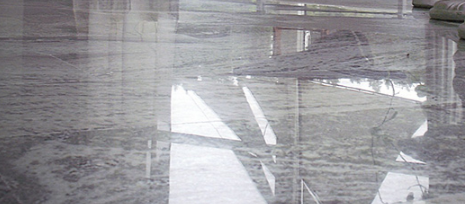
Granite:
Perhaps the best choice for kitchen and other highly-trafficked areas is granite. It comes in literally thousands of color combinations and once polished is very hard and can hold up for a number of years without showing wear. It is moderately priced, but by no means cheap.
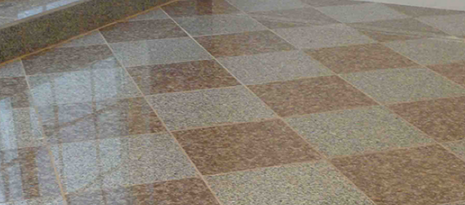
Limestone:
While it’s an option, limestone is another easily damaged type of natural stone. It may be used near a fireplace or to create a walkway in outdoor flooring applications. It is relatively affordable and has a natural, earthy look.
Slate:
Similar in appearance and texture to limestone is slate, but it is far harder and denser thus making it a great choice for kitchens and heavily-trafficked floors.
Travertine:
A more decorative form of limestone, travertine looks amazing but is also not a great choice for kitchens and other high-traffic areas. It will require a coating for use in any application but many travertine flooring tiles are produced with this treatment already complete.
You may hear of ceramic tiles separated by their grade. There are three types of tile grading classifications for ceramic tile specifically. Other tiles have similar grading scales and the grade at which a tile is rated will inform you about its quality and best use cases.
Standard Grade:
This is the finest of the three grades and it indicates that the tile meets safety standards and is nearly free of any visual imperfections.
Secondary Grade:
If you intend to use tiles for flooring, Secondary Grade is the bare minimum quality level you can safely consider. It will meet safety guidelines but will likely contain some visual difficulties.
Cull Grade:
The lowest grade of tile classification is Cull Grade and is an indication that the tile is not suitable for use in flooring. If you find a great deal on Cull Grade tile and want to use it somewhere in your design, you can put it to use as a decorative wall treatment.
There are similar grading classifications for other non-ceramic tile materials such as marble. It definitely pays to consider the grading, classification and wear rating of tiles prior to making a final selection.
Some very attractive, yet modest ceramic or porcelain tiles start in the affordable price range of $1 to $2 per square foot on the material side. That said, some specialty tiles can cost upwards of $30 per square foot, but those are more the exception than the norm.
Installation of tile is generally a bit more expensive than other flooring types with average installation prices close to $6 per square foot. If you get estimates for installation that are substantially less than this figure, you might want to look into the contractor’s qualifications as they might not be proficient or very experienced at tile installation.
Because flooring tile is made from a variety of different substances and with an assortment of distinct finishes, it pays to pair the tile material to your intended use of it. When tiling a hallway or other highly-trafficked area of your home, you’d be advised to use a tile with a high abrasion resistance which means that it will hold up for longer and show less wear.
For bathroom flooring applications, look for tiles made with an unglazed or textured surface. This will ensure that the floor doesn’t get excessively slippery when wet. You’ll also want to make sure that your tile choice is not a very porous one so that it doesn’t absorb moisture which would create an environment for mold and mildew growth.
You’ll find certain tile materials referred to as impervious which means that they are the least absorbent of water. These make great choices for bathroom uses, especially for families with young children. Less water absorption means a reduced likelihood for tiles becoming slippery.
It’s very fashionable and common to choose tile as a material choice when designing a walkway or patio. While that choice can often work out very positively, you want to make sure that you are using tiles designed with outdoor use in mind. This is especially true for those living in cold weather climates.
The outdoor-specific tiles you want will be designed such that they are able to withstand freezing cold Winters and sweltering hot Summers. Indoor tiles used in harsh outdoor applications will eventually crack.
For many intended uses and designs, tile flooring makes a world of sense. However, whether the material makes sense for you is going to have a lot to do with your tastes and your budget.
Tile flooring is very long lasting and will only occasionally crack, chip or wear down to the extent that a replacement or repair becomes necessary. Whether tile makes sense for you will have something to do with your budget, as tiled floors aren’t by any means the least expensive material choice, but it will also have a good deal to do with your design preferences.
Carpeted floors, for the most part, are seen as a budget option. For the most part, this is the truth. A more elegant way to use carpet as a flooring choice is to purchase a high-grade ornate rug to cover a hardwood floor for a splash of color or to accent a smaller sub-section of a larger space. That all said, carpet is the perfect flooring choice for a number of situations and individuals.
It’s natural to think that all carpets are essentially the same, but there are a number of distinct carpet styles and types. It is wise to have an understanding of some of the most common types prior to deciding on one specific carpet material.
Saxony:
A high-end and very attractive type of carpeting, Saxony carpets feature pile fibers packed densely and cut on their ends to create a very level and stiff carpet feel.
Loop (aka Berber):
In a loop style carpet, the tops aren’t cut but looped back into the base of the carpet giving a textured and uneven appearance.
Patterned:
Some carpets vary areas of loop and cut fibers to create a pattern out of the material heights.
Frieze:
In this style, fibers are short and densely packed and use a twisted pile, rather than cut or looped. They are often found in commercial settings.
When shopping for carpets in your home it is common for your retailer or installation team to have books including dozens of samples that you can see and touch prior to making a final selection.
Carpet is nice if you’re looking for something soft under your feet or if you want to add a solid color to your space. Its affordability in terms of upfront costs also makes it an attractive option.
The downsides of carpet relate to the material’s tendency to collect stains, odors, and dirt. Vacuuming is the most practical cleaning method and while it’s effective in sprucing up the cleanliness of your carpet, it won’t take care of stains. Carpet flooring will require occasional shampooing in order to get even close to its original quality.
You can expect to pay a minimum of $2 per square foot for the carpet material itself and up to about $6 per foot for very high-grade material. If your carpet doesn’t come with padding, you should expect to pay another $2 to $4 per square foot of padding depending on the level of softness and longevity you desire.
Carpet installation costs will add another $2 to $5 per square foot, depending on the type of floor you’ll be covering, the type of carpet you’re installing and where you live. Generally speaking, carpet flooring will be more affordable to install after all is said and done than other flooring materials but may not last as long.
It makes sense for bedrooms, hallways, and living areas but many homes with modern designs are excluding carpet from every room of the house.
There are no easy answers outside of hiring an interior designer to assist you in coming up with the right flooring type for your home’s design and your budget. Certainly, you can utilize many different types in one home and as discussed in this guide, each flooring type has various grades of quality.
It will help to begin by writing down your wants and needs on a room by room basis and then to get in touch with some local flooring experts in your area.
Meet with at least three flooring specialists and receive suggestions and cost estimates from each. Try to remember the longevity and various advantages and disadvantages that come with each type of flooring material so you can best select the floor that will suit your style, needs, and budget.